#lotte in Weimar
Text
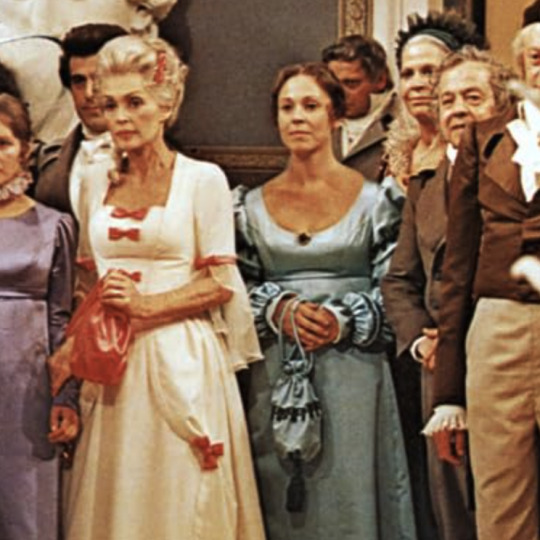

The GDR was famously chronically strapped for cash. Luckily, that did not hinder the DEFA film company to keep on filming. As may be expected: It shows!
The GDR was famously chronically strapped for cash. Luckily, that did not hinder the DEFA film company to keep on filming. As may be expected, it shows!
Like with this costume, so pared back, one can hardly pinpoint the time period it was supposed to represent. On the other hand, it was very coherently reused: It (presumably) first appeared on Martina Wilka and Lilly Palmer playing young and older Charlotte Kestner, respectively, in 1974’s Lotte in Weimar – who, Thomas Mann argued, was fellow scribe Goethe’s inspiration for his Werther’s Lotte.
So, Lotte got to wear the costume in 1976’s The Sorrows of Young Werther – where Katharina Thalbach played her. Both films were directed by Egon Günther and costumed by Christiane Dorst, who worked on a large portion of 1970 to Mid-1990s 19th century set German movies.
Costume Credit: carsNcors
Follow: Website | Twitter | Facebook | Pinterest | Instagram
#lotte in Weimar#Katharine Thalbach#Lilly Palmer#Charlotte Kestner#The Sarrows of Young Werther#costume drama
126 notes
·
View notes
Text

imo thomas mann is really funny ok
#lotte in weimar#getting really into the tradwife pipeline for being prussian until you realize that it's maybe kind of gay#oh yeah the character speaking is also arthur schopenhauer's sister
1 note
·
View note
Text

Lotte Hahm — famous lesbian transvestite, activist and organizer, and owner of several small bars in Berlin throughout the 1920s to 1940s — featured in the pages of a 1930 issue of trans magazine Das. 3 Geschlecht, holding up an advertisement for Die Freundin, the world’s first lesbian magazine on record.
Translation:
The sign reads “Hooray! The Girlfriend is here again!”
The caption below reads “The Girlfriend is the up-to-date magazine for women who love women as well as for transvestites. Price 20 pfennig, available everywhere.”
#op#photography#zines journals and publications#die freundin#das 3 geschlecht#1930s#1930#lotte hahm#weimar#she ran a club for lesbians and trans ppl before and During the nazi occupation#like idk i found out abt her Today but im obsessed shes fascinating and iconic#butch tag#l#tgnc
1K notes
·
View notes
Text
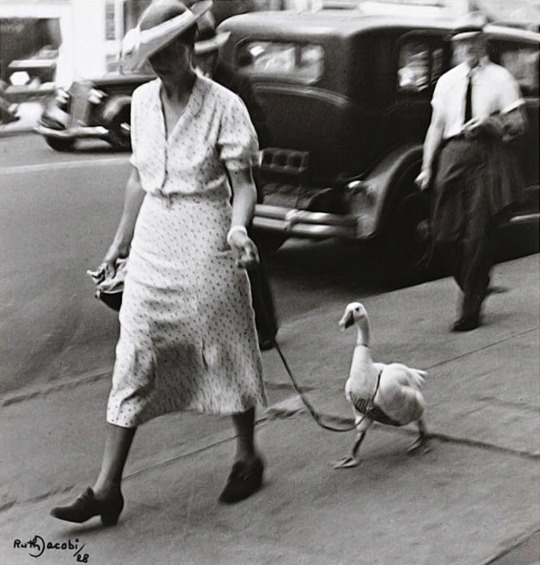
Ruth Jacobi, Spaziergängerin mit Gans, Humorous street snapshot from the Jewish Quarter of a woman walking a goose by the collar as if the fawl were her dog in the streets of New York City, 1928
Ruth Jacobi was the sister of Lotte Jacobi. Photography ran in the Jacobi family. Lotte and Ruth's great-grandfather, Samuel Jacobi, visited Paris between 1839 and 1842, where he obtained a camera, a license, and some instruction from L.J.M. Daguerre and then returned to Thorn to set up a studio. He prospered at his trade and eventually passed the business on to his son, Alexander. Alexander, in turn, handed the business down to his three sons, the eldest of whom was Lotte and Ruth's father, Sigismund.
Ruth Jacobi emigrated in 1935 to New York, where she opened a studio together with her sister Lotte Jacobi.
#ruth jacobi#Jewish Quarter#new york city#berlin#1928#weimar#weimar period#weimar era#geese#goose#lotte jacobi#streets of berlin#Atelier Jacobi#the atelier jacobi#20s new york#20s berlin#Spaziergängerin mit Gans#jew#jews#jewish people#studio#studio jacobi
93 notes
·
View notes
Text
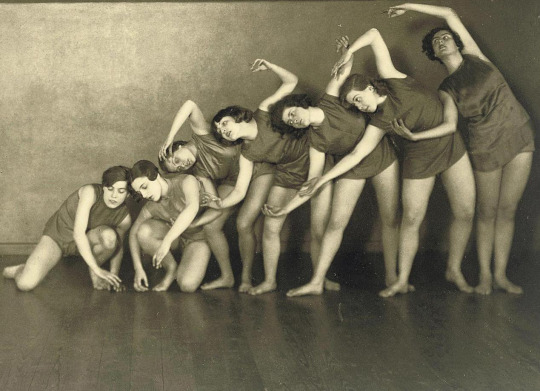
Schuelerinnen der Tanzschule Skoronel in Berlin. Tanzgruppe Skoronel-Truempy. Fotografie um 1930. Foto: Lotte Jacobi
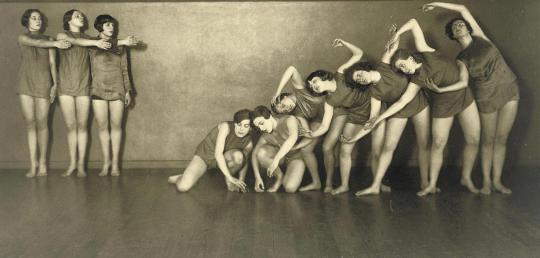
Lotte Jacobi :: An der Berliner Tanzschule von Berthe Trümpy und Vera Skoronel, um 1925. © Staaliche Museen zu Berlin, Kunstbibliothek | src Zwanzigerjahre Die Weimarer Republik war ein Tanzparadies
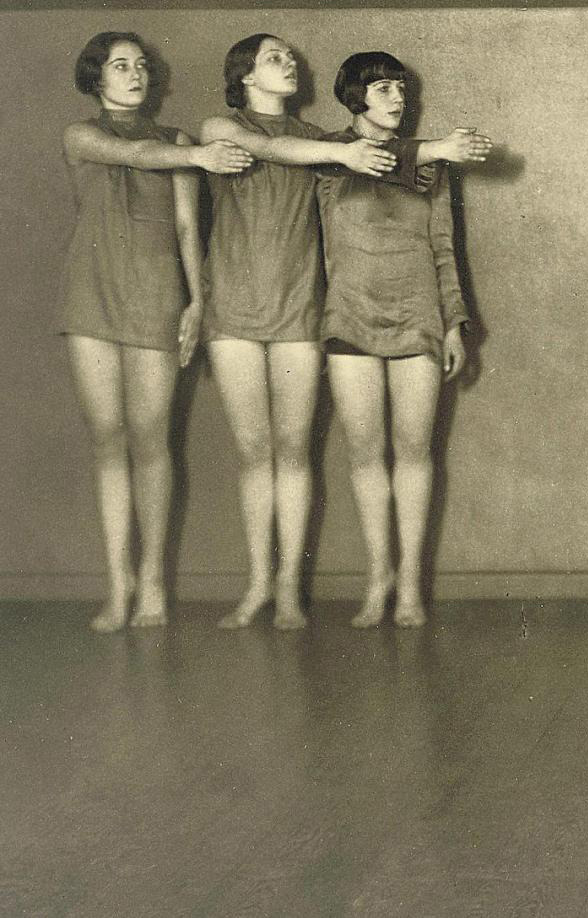
Students at the Skoronel dance school in Berlin. Dance group Skoronel-Truempy. Photograph around 1930. Photo: Lotte Jacobi
read more and view more on wordPress
#dance students#dance school#trumpy dance school#skoronel dance school#lotte jacobi#atelier jacobi#1930s#late 1920s#1920s#weimar republic#tanzschule#schulerinnen#dancers#tanzerinnen#danseuses#danzatrici#bailarinas#truempy tanzschule#skoronel tanzschule#tanzgruppe#tanzschulerin#tanzchulerinnen#dance group#weimarer republik#weimar era#tanzparadies#dance paradise
101 notes
·
View notes
Photo
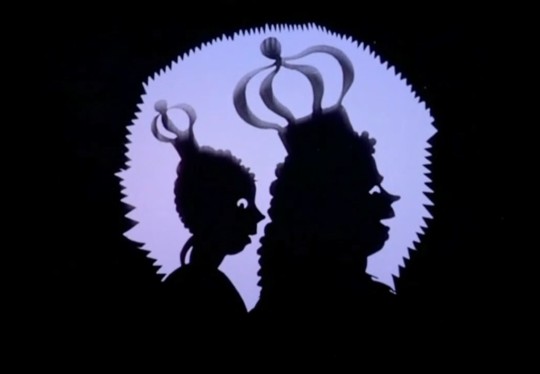


Cinderella (Lotte Reiniger, 1922)
#lotte reiniger#cinderella#animation#film#classic film#german film#german cinema#weimar cinema#1920s#my screencaps
6 notes
·
View notes
Text
Unbound Boxes Limping Gods: Disconnected Stories: Issue # 613: Damenklub Violetta
After allowing Heyem to apply her makeup and disguise her alopecia, Alexand took her past sister to Berlin 1926, in the height of the Weimar Republic, to one of her and Katherine’s favourite drag clubs, Damenklub Violetta, led by their dear friend, Lotte Hahm. (If you enjoy these stories, please consider donating to the Drag Defense Fund, a charity supported by the American Civil Liberties Union,…

View On WordPress
#Alexand Merek#art#Damenklub Violetta#Drag#feminist fiction#freedom#Germany#graphic story#Herstory#Heyem Merek#Identical twins#illustrated story#LGBTQ#Lotte Hahm#short story#speculative fiction#Unbound Boxes Limping Gods#Weimar Republic
1 note
·
View note
Text
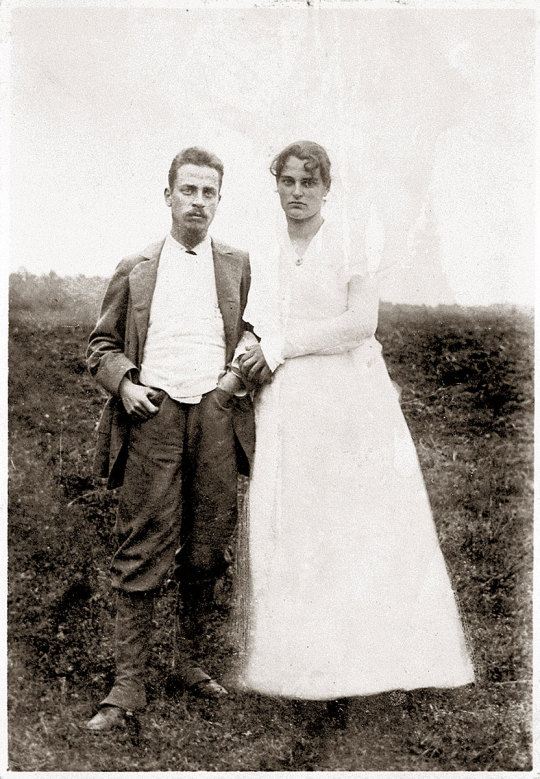
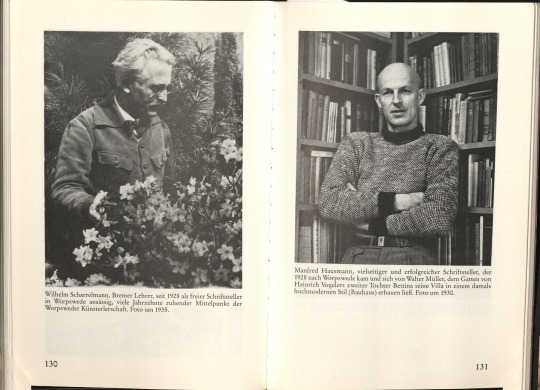
#rainer maria rilke#clara westhoff#worpswede#clara wieck#nastassja kinski#frühlingssinfonie#fritz mackensen#großherzoglich-sächsische kunstschule weimar#lotte am bauhaus#manfred hausmann
1 note
·
View note
Text

Lotte Laserstein - Woman and violinist (1933-35)
Lotte Laserstein, was born in East Prussia 1898, her father died in 1902 and she grew up with her mother and grandmother in present Gdansk and Berlin. In 1927, she completed her education at the Academy of Fine Arts in Berlin and immediately received great appreciation for her portraits depicting young, modern women in the Weimar Republic. When the Nazis took over in 1933, her promising career was interrupted since she at the time was categorized as Jewish due to her grandparents (not her parents) where Jews.
An exhibition at the Galerie Moderne in Stockholm in 1937 gave her the opportunity to leave her home country. She later became a Swedish citizen and stayed in Sweden for good, first living in Stockholm and later in Kalmar. In 1987, her artistry was highlighted at two prestigious galleries in London, it was the beginning of an international rediscovery. In 2003, she also received renewed attention in Germany through an exhibition at the Museum Ephraim-Palais in Berlin. "Meine einzige Wirklichkeit" was the theme of the Berlin exhibition, a quote from Lotte Laserstein who saw art as the reality she lived in and for. Then came the rediscovery in Sweden, first a memorial exhibition at Kalmar Museum in 2004, then at the Jewish Museum and later in Bror Hjorth's house in Uppsala.
This work depicts, according to Dr Anna-Carola Krausse, Lotte's friend and muse Traute Rose, the male violinist remains anonymous. The work is most probably executed between 1933-1935. (source)
136 notes
·
View notes
Text
Summer Reading Challange
Hello, Tumblr followers, casual watchers, first-timers, and anonymous visitors. I created this blog to share my passions with other academics. As a workaholic master's student, Tumblr is my little oasis of peace.
Since summer vacation just started and I, due to school and work, haven't been able to read as much as I would have liked, I decided to start a summer reading challenge, from July 1 to September 30. The goal is to read as many books as I can. I will occasionally post reviews of the books I will read.
If you want, you can leave recommendations, leave your own opinions or share your own summer challenge and progress. The first version of my list includes 30 titles, I will add more later if something seems interesting to me.
Summer Reading Challenge List:
The Goldfinch // Donna Tartt
The Master and Margarita // Mikhail Bulgakov
Dead Souls // Nikolai Gogol
The Red Room // August Strindberg
The Gothic Rooms // August Strindberg
War and Peace // Lev Tolstoi
The Demons // Fyodor Dostoyevsky
The Sound and The Fury // William Faulker
The Trilogy of New York // Paul Auster
Too Loud a Solitude // Bohumil Hrabal
Lullaby // Chuck Palahniuk
1984 // George Orwell
The Winter of Our Discontent // John Steinbeck
The Human Body // Paolo Giordano
Maybe Tomorrow I Will Stay // Lorenzo Marone
Travels in the Americas // Albert Camus
Exile and the Kingdom // Albert Camus
Lotte in Weimar // Thomas Mann
Death in Venice // Thomas Mann
The Flowers of Buffoonery // Osamu Dazai
Lord of the Flies // William Golding
A Clockwork Orange // Anthony Burgess
Spring Snow // Yukio Mishima
Runway Horses // Yukio Mishima
The Temple of Down // Yukio Mishima
The Decay of the Angel // Yukio Mishima
The Metamorphosis and other stories // Franz Kafka
Towards Beauty // David Foenkinos
Oriental Tales // Marguerite Yourcenar
The Crime of Olga Arbyelina // Andreï Makine
#bookblr#studyblr#academics#dark academics#literature#reading#book#currently reading#books and reading#booklr#book lover#challange#reading classics#reading challenge#reading list#bucket list#summer#author#authors#readers#fiction
9 notes
·
View notes
Text
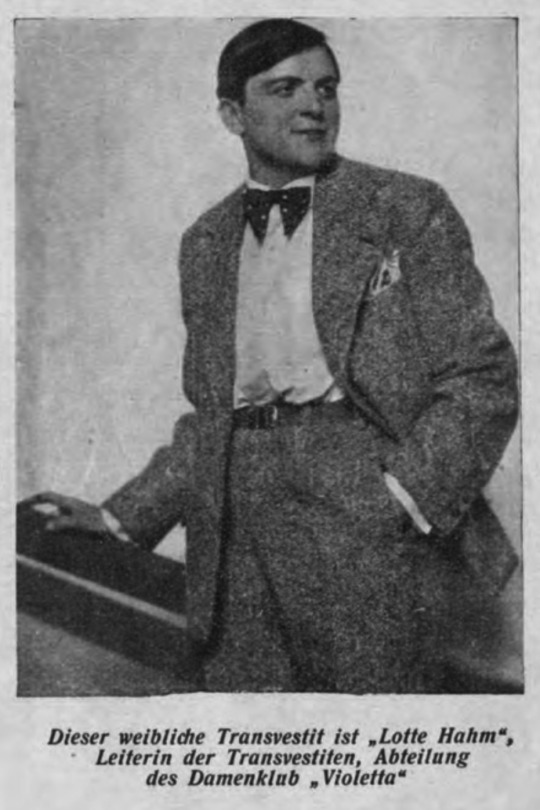
Lotte Hahm featured in the pages of a 1930 issue of trans magazine Das. 3 Geschlecht. The caption reads “This female transvestite is Lotte Hahm, director of the transvestite section of the women’s club Violetta.”
Hahm founded the Damenklub Violetta (Violetta Ladies’ Club) in 1926 and soon began organizing events such as dance parties, a parade of hats, and even a “cream puff eating contest” during which she performed her own musical comedy act, dyked out in a tuxedo. As time went on her organizing with Violetta would begin to center political action over social function, and grow to have local chapters in cities across Europe.
She would go on to form the Transvestitenvereinigung D`Eon (Transvestite Association) in 1929, comprised of roughly 60 ladies and gentlemen led by Hahm and aligned with the Bund für Menschenrecht (Association for Human Rights) — an organization for which she led their women’s group. The next year, in 1930, Hahm launched a new association: the Bund für Ideale Frauenfreundschaft (Association for the Ideal Friendship of Women) and promoted it in the ever popular Weimar lesbian magazine Die Freundin, saying:
“…not just dances and social events will bring you equality; you also must fight if you want respect and dignity. The eagerness to fight must fill your hearts and shine in your eyes. That is why you should organize yourselves in the BIF!”
#op#photography#das 3 geschlecht#lotte hahm#damenklub violetta#1930s#1930#additional information#brief history#weimar#l#tgnc#butch tag
888 notes
·
View notes
Photo

Lotte Jacobi, The movie actress Lil Dagover, Berlin, 1928.
#lotte jacobi#lil dagover#1928#berlin#weimar#weimar republic#weimar culture#Maria Antonia Siegelinde Martha Lilitt Seubert#german actress#1920s actress#20s actress
76 notes
·
View notes
Text
In September 1938, Thomas Mann, the Nobel Prize–winning author of Death in Venice and The Magic Mountain, fled Nazi Germany for the United States. Heralded as “the greatest living man of letters,” Mann settled in Princeton, New Jersey, where, for nearly three years, he was stunningly productive as a novelist, university lecturer, and public intellectual. In The Mind in Exile, Stanley Corngold portrays in vivid detail this crucial station in Mann’s journey from arch-European conservative to liberal conservative to ardent social democrat.
On the knife-edge of an exile that would last fully fourteen years, Mann declared, “Where I am, there is Germany. I carry my German culture in me.” At Princeton, Mann nourished an authentic German culture that he furiously observed was “going to the dogs” under Hitler. Here, he wrote great chunks of his brilliant novel Lotte in Weimar (The Beloved Returns); the witty novella The Transposed Heads; and the first chapters of Joseph the Provider, which contain intimations of his beloved President Roosevelt’s economic policies. Each of Mann’s university lectures—on Goethe, Freud, Wagner—attracted nearly 1,000 auditors, among them the baseball catcher, linguist, and O.S.S. spy Moe Berg. Meanwhile, Mann had the determination to travel throughout the United States, where he delivered countless speeches in defense of democratic values.
In Princeton, Mann exercised his “stupendous capacity for work” in a circle of friends, all highly accomplished exiles, including Hermann Broch, Albert Einstein, and Erich Kahler. The Mind in Exile portrays this luminous constellation of intellectuals at an extraordinary time and place.
2 notes
·
View notes
Text

Unknown photographer. International Congress of Constructivists and Dadaists, Weimar. Summer 1922. Gelatin silver print, 6½×8¾" (16.6 × 22.2 cm). Bauhaus-Archiv Berlin. Top row, from left:
Lucia Moholy, Alfred Kemeny, László Moholy-Nagy. Second row from top: Lotte Burchartz, El Lissitzky, Cornelis van Eesteren, Sturtzkopf.
Third row from top: Max Burchartz (with child on shoulders), Harry Scheibe, Theo van Doesburg, Vogel, Peter Röhl. Front row standing:
Alexa Röhl, Nelly van Doesburg, Tristan Tzara, Nini Smit, Hans Arp.
Front: (left) Werner Gräff, (lying) Hans Richter
3 notes
·
View notes
Note
Recommending Lotte Eisner's books on early German cinema and the crowd involved. The Haunted Screen isn't too difficult to find. Her book on F. W. Murnau and his work is written with a lot of affection.
Jim Shepherd's 'Nosferatu' covers the romantic relationship between F. W. Murnau and poet Hans Ehrenbaum-Degele. The events of their lives in Weimar Berlin are really beautifully captured.
Omg! Thank you sm!! 🩷
2 notes
·
View notes
Text
Disturbo?
«Ma figliolo, che vuol mai dire disturbare? Tutto è disturbo. È da vedersi soltanto se un disturbo torna gradito o importuno.»
T. Mann, [Lotte in Weimar, 1939], Carlotta a Weimar, Milano, Mondadori, 1993 [Trad. L. Mazzucchetti]
28 notes
·
View notes